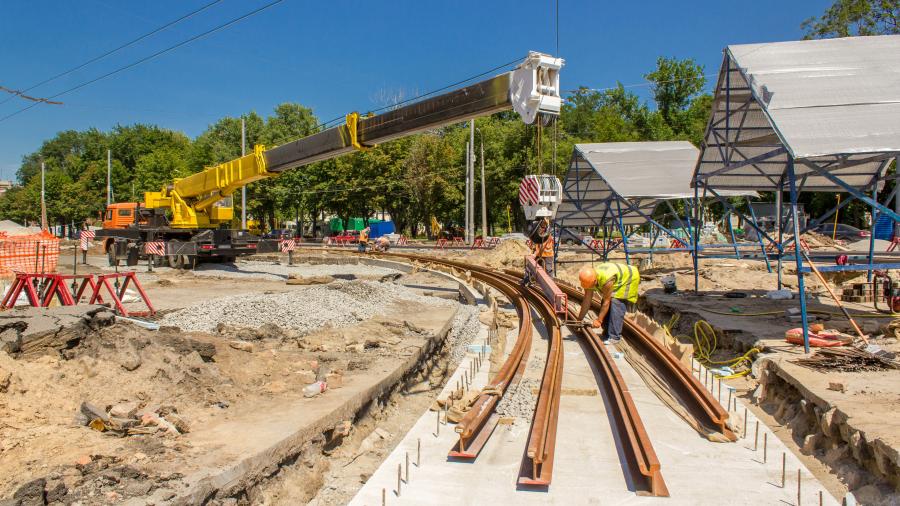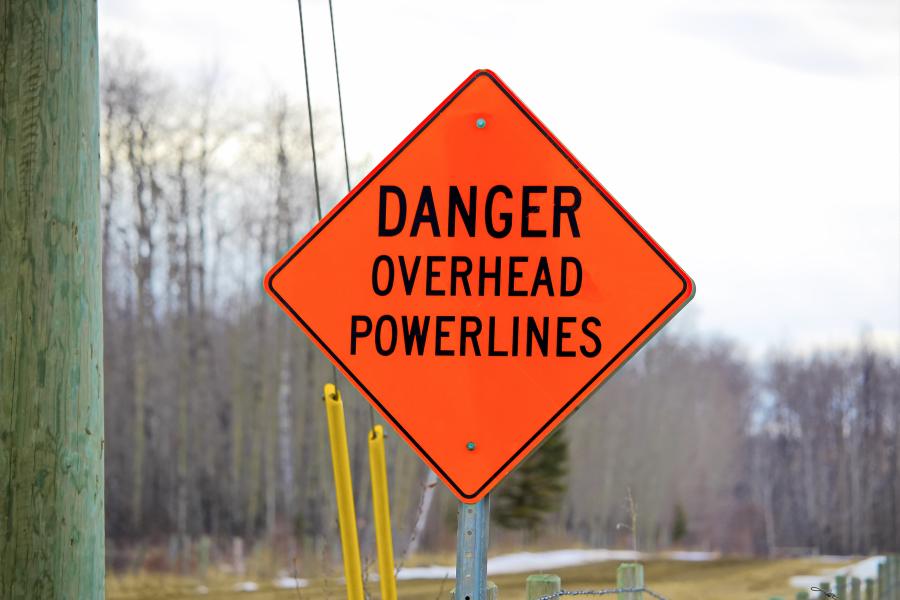A crane operator should be fully aware of his or her surroundings when making a lift.
Two very different situations in Texas this year ended in fires that, while they didn't cause injury or death, did stop work and caused alarm in the local community. Crane end users, and the crew that works in and around the machines, must take the possibility of a rig fire seriously and have a prevention plan in place.
In Lubbock, Texas, a mobile construction crane burst into flames on a downtown freeway, triggering explosions. It also resulted in an hours-long road closure and delayed the completion of jobs it would have been dispatched to.
In Corpus Christi, Texas, a tower crane working on a bridge project caught fire high over a minor league baseball game in progress. The incident injured someone on the ground below when a bucket and debris dropped from the crane as the fire started.
Potential for the Preventable
"When most people consider crane accidents, they picture an overturned crane or a crane that has come into contact with power lines," said Louise S. Dillon of the Minnetonka, Minn., fire suppression product manufacturer Fireaway Inc. "The equally destructive risk associated with fire is rarely considered, and it should be."
She pointed out that with so much riding on a single piece of equipment, it is foolish not to protect it.
"Thankfully, crane fires are not that common, but when they do happen, they often make international news," said Dillon.
Though construction cranes the world over are manufactured under the strictest safety design guidelines, their potential for fire cannot be ignored. Because many models are diesel-powered, the heat and fuel produced by the diesel engine can be a source of ignition.
As Dillon explains, there also are hydraulic systems and complex electrical systems that all have the capability to ignite a fire.
"Even electrically operated cranes face a substantial fire risk from electrical faults, overheated motors and/or battery storage systems."
A fire of any magnitude on a crane will at the least remove it from service while it is being repaired and recertified. If the rig serves as the primary machine on a project, crane operations will be shut down on that site for a significant period of time, said Dillon.
"Next, consider a crane fire that results in the total loss of the machine — a huge financial hit. However, that may not be the biggest expense."
The cost and penalties from downtime, lost productivity and failing to meet deadlines may actually add up to even more than the price of a new crane.
"There can be no question that the efficiency and profitability at a job site is dependent upon having functional lifting equipment," said Dillon. "Cranes and lifting equipment should be among the most-protected assets on the job site. Sadly, this often is not the case."
How the Unexpected Can Happen
According to Great American Insurance Group, there are numerous potential fuels and sources of ignition on heavy equipment on a job site or in a yard.
Like other types of machinery, this makes mobile construction cranes and tower cranes potential fire hazards on your job site.
"In the construction industry, heavy equipment is just as important to your day-to-day operations as your employees," wrote the company.
The need to repair or replace damaged equipment is costly and may lead to delayed contract completion.
"This can result in either penalties or nullified contracts for the failure to complete work on schedule."
Though a crane can make certain jobs significantly easier, you can do serious damage to this vital piece of equipment, especially as the result of a fire.
Astro Crane advises end users to avoid major accidents by making sure crane operators are aware of all of their surroundings at all times.
"And they need to look out for hazards during crane operation," said the New England crane provider. "One of the most dangerous hazards is power lines overhead."
Because power lines transport electricity, simply brushing up against a live wire with a crane can cause an electrocution to take place or even start a fire. Astro advises crane operators to be mindful of wires before they power up their machines on the job.
"By avoiding [wires] at all costs, crane operators can reduce the risks associated with them and prevent fires from taking place on job sites."
Prior to the start of a project, a construction manager should survey the site for overhead wires that could complicate the operation. The crane should be placed a safe distance away from wires, advises Astro Crane.
And while the construction crane is being used, the operator also should work closely with the signal person on the ground. The signal person is in charge of keeping a close eye on power lines so that if the operator comes even close to wires, he or she should be alerted immediately.
The goal is to prevent the crane from coming into contact with the overhead power lines.
"In the event that a crane does touch a power line, workers in the area should be evacuated right away," wrote Astro. "Additionally, the local power company should be contacted so that they can send someone out to inspect the potential damage done to wires before any work resumes."
Enforcing Safety Protocols
In addition to theft and equipment turnover, construction crane fire is one of the major losses associated with the business of operating heavy equipment.
The Hanover Insurance Group offers simple advice for a site-specific prevention policy: Start with an education in what OSHA requires.
According to the insurance provider, OSHA requires that each job site have a fire prevention plan and such a plan must follow these procedures:
- Access to all firefighting equipment must be maintained at all times.
- All firefighting equipment must be conspicuously located and maintained.
- Training must be provided to employees who will use fire protection equipment.
- Portable fire extinguishers are required on all job sites.
- Fire emergency reporting numbers should be prominently posted.
- Flammable and combustible liquids must be stored and dispensed properly.
- LP gas-fired equipment must be used and LP cylinders stored in accordance with regulations.
- Ensure workers know how to report a fire or other emergency to minimize response time.
- Develop an inspection program that periodically reviews the fire prevention efforts on the project.
Around mobile equipment, including construction cranes:
- Accumulations of grass, brush or trash under mobile equipment can be ignited by the engine or exhaust. Equipment storage locations should be cleared of these materials.
- During daily equipment inspections, note any leaks or seepage from hoses or fittings, and replace these components at the first sign of wear or leakage.
- Only refuel equipment that is turned off and cool. Spilled fuel can be ignited by hot surfaces.
- Keep the equipment clean. Excessive build-up of dirt can cause higher temperatures and increased wear on components.
- Protect against arson and vandalism by locking all engine compartment covers and fuel supplies.
- Keep equipment away from open fires or hot work that could be an ignition source.
In and around specific construction areas:
- Enforce a no-smoking rule in all building locations, fueling areas and near combustible or flammable storage locations.
- Only store flammable liquids in approved containers.
- Initiate and enforce a good housekeeping policy to minimize accumulation of scrap and combustible debris.
- Locate trash bins away from buildings.
- Install and maintain electrical and temporary heating systems in accordance with manufacturer recommendations.
- Only allow the installation and maintenance of temporary electrical systems to be performed by qualified electricians.
- Inspect temporary electrical equipment periodically for damage.
- Control hazards of cutting and welding using a hot work program or permit system.
In the use and maintenance of firefighting equipment:
- Maintain fire extinguishers and fire suppression systems in accordance with OSHA requirements.
- Inspect fire extinguishers to ensure they are pressurized and quick access to them is not blocked off by materials.
- Ensure fire extinguishers are readily available near hot work operations.
- Ensure fire hydrants are not blocked by equipment or material storage.
In and around storage areas:
- Maintain storage yards to reduce accumulation of grass, trash or brush that could allow a fire to spread.
- Maintain fueling areas in accordance with OSHA requirements.
- Do not allow dunnage, pallets, cardboard or other scrap to accumulate in storage areas or inside storage containers.
Working with public agencies:
- Develop site plans that indicate fire department access points for your job site.
- Contact the local fire department and make sure they have the correct address information for your site.
- Identify new street names on plans and verify that local police and fire departments have this information.
- Maintain a 24-hour contact number so law enforcement or fire department personnel can reach you in an emergency or to confirm after-hours site access.
- Request additional patrols and discuss who has after-hours access and authorization with local police.
- Request a pre-plan walk-through by the local fire department to ensure they are familiar with your operations.
- Discuss water volume requirements with fire department personnel to ensure adequate water is available based on type and size of the project. CQ
This story also appears on Crane Equipment Guide.
Lucy Perry
Lucy Perry has 30 years of experience covering the U.S. construction industry. She has served as Editor of paving and lifting magazines, and has created content for many national and international construction trade publications. A native of Baton Rouge, Louisiana, she has a Journalism degree from Louisiana State University, and is an avid fan of all LSU sports. She resides in Kansas City, Missouri, with her husband, who has turned her into a major fan of the NFL Kansas City Chiefs. When she's not chasing after Lucy, their dachshund, Lucy likes to create mixed-media art.
Read more from Lucy Perry here.
Today's top stories

















